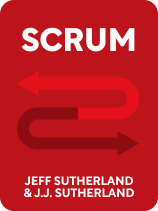

This article is an excerpt from the Shortform book guide to "Scrum" by Jeff Sutherland. Shortform has the world's best summaries and analyses of books you should be reading.
Like this article? Sign up for a free trial here .
What are the Scrum roles and responsibilities? How do the three roles work together to make an efficient team?
In his book Scrum, Jeff Sutherland details the three roles within a Scrum team. The roles are product manager, Scrum coach, and developer.
Here’s how the roles work together to create an efficient and flexible team.
The Scrum Team Roles
Sutherland proposes three roles within a Scrum team:
- Product Manager
- Scrum Coach
- Developers
These are the only three roles in a Scrum team. They are each responsible for working together to create consistent value throughout the Scrum process. Here are the Scrum roles and responsibilities.
Product Manager
The Product Manager (or what Sutherland calls the “Product Owner”) creates the overall vision for the product and makes sure the product is both viable and valuable. The Product Manager’s responsibilities include:
- Determining the goal of the project and what it should look like when it’s finished
- Creating the task list of everything that needs to be done to complete the project
- Ordering the task list by the value it brings to the project
- Relaying feedback from the customers or stakeholders to the rest of the Scrum team
- Making changes to the project objective and the task list based on the feedback
The Product Manager is responsible for important decisions that will determine the success of the project. Her job is to convince the team of her decisions and make sure the work being done is bringing value.
(Shortform note: In Inspired, Marty Cagan agrees with Sutherland’s basic framework of having a product manager direct the vision of the project, oversee its task list, coordinate messaging to customers and stakeholders, and adjust the project as needed. Cagan differs in that he calls this person a project manager rather than a product manager, and he draws attention to the difference—this person oversees the work and the process, not the technical details of the product itself. Although Sutherland uses the word “product” in his title for this role, he views the role in the same way Cagan does.)
Scrum Coach
While the Product Manager is responsible for making the product valuable, the Scrum Coach is responsible for making sure the team is working as efficiently as possible. She coaches the team in the ways of Scrum and keeps the team working within the Scrum framework. The Scrum Coach does this by:
- Encouraging the team to self-organize and share knowledge
- Keeping the team focused on the current task
- Finding and removing any impediments to the team’s progress
The Scrum Coach meets with the team daily to make sure things are running smoothly. Like the Product Manager, she doesn’t assign specific tasks. She just ensures that communication is open and the team is making consistent progress.
(Shortform note: The 4 Disciplines of Execution discusses the way organizational coaches can help implement a company’s vision. An internal coach benefits an organization in three ways:
- They can quickly provide the team with the information or support they need.
- They can help the organization learn to be self-sufficient.
- They can quickly train new employees or leaders in the ways of the organization.)
Developers
The Developers are responsible for completing the items from the task list. They’re the ones building the product with guidance from the Product Manager and Scrum Coach. The Developers duties include:
- Estimating the relative size of each task
- Deciding how to complete the tasks within each Sprint
- Finishing each task completely before moving on to the next
Although the Scrum Coach makes sure everyone is working within the Scrum framework, the Developers must still hold each other accountable. Because the Scrum framework gives the Developers the freedom to work as they see fit, it’s their responsibility to create consistent value within each Sprint.
| Inspired Versus Scrum In Inspired, Cagan discusses the importance of engineers to the Product Manager. The engineers, like Sutherland’s developers, are responsible for building the product. The engineers and the Product Manager should have a close, collaborative relationship in which they share ideas. The engineers will understand the product in more detail than the Product Manager, so they will be able to provide creative, realistic solutions to problems. This is similar to Sutherland’s ideas, in which the developers create the product while the Product Manager focuses on the big picture. On top of the key positions, Cagan provides other roles that may be needed for product development, including marketing experts, researchers, analysts, and test engineers. Sutherland would probably be against these extra roles for two reasons: 1) All these duties should be performed by people on the original team and 2) the specialized roles would get in the way of collaboration. Instead, these people would just be part of the Developer team. |

———End of Preview———
Like what you just read? Read the rest of the world's best book summary and analysis of Jeff Sutherland's "Scrum" at Shortform .
Here's what you'll find in our full Scrum summary :
- Why the "Waterfall Method" leads to inefficiency and wasted money
- An explanation of the Scrum method and details on how to implement it
- How to use Sprints to get more work done






